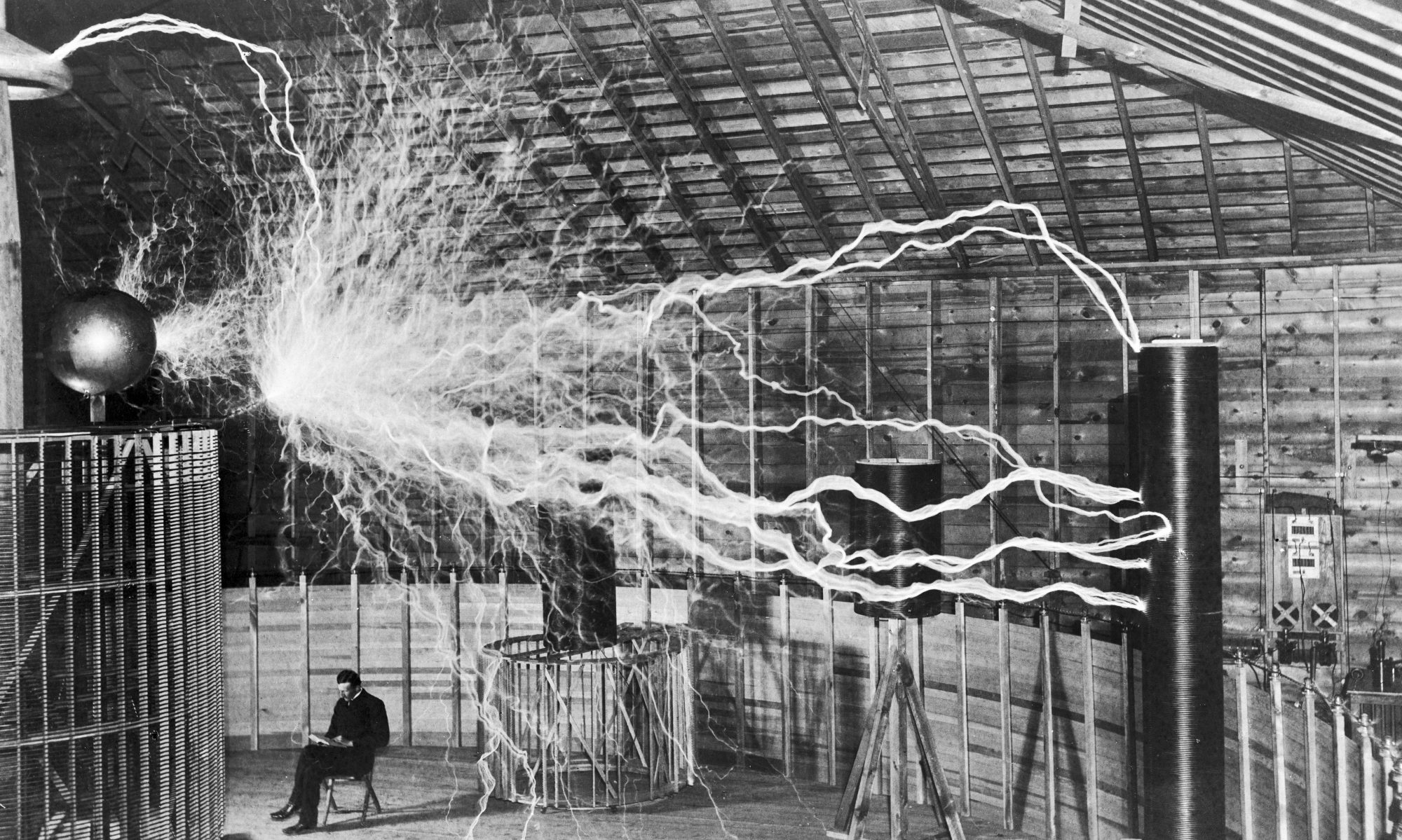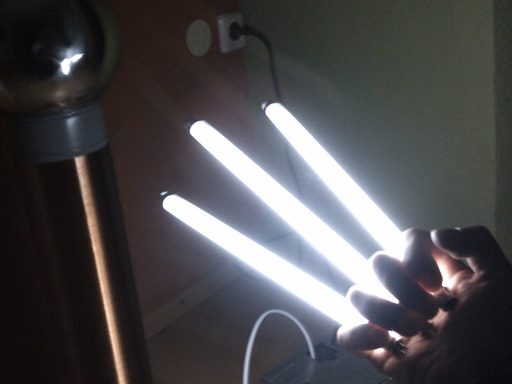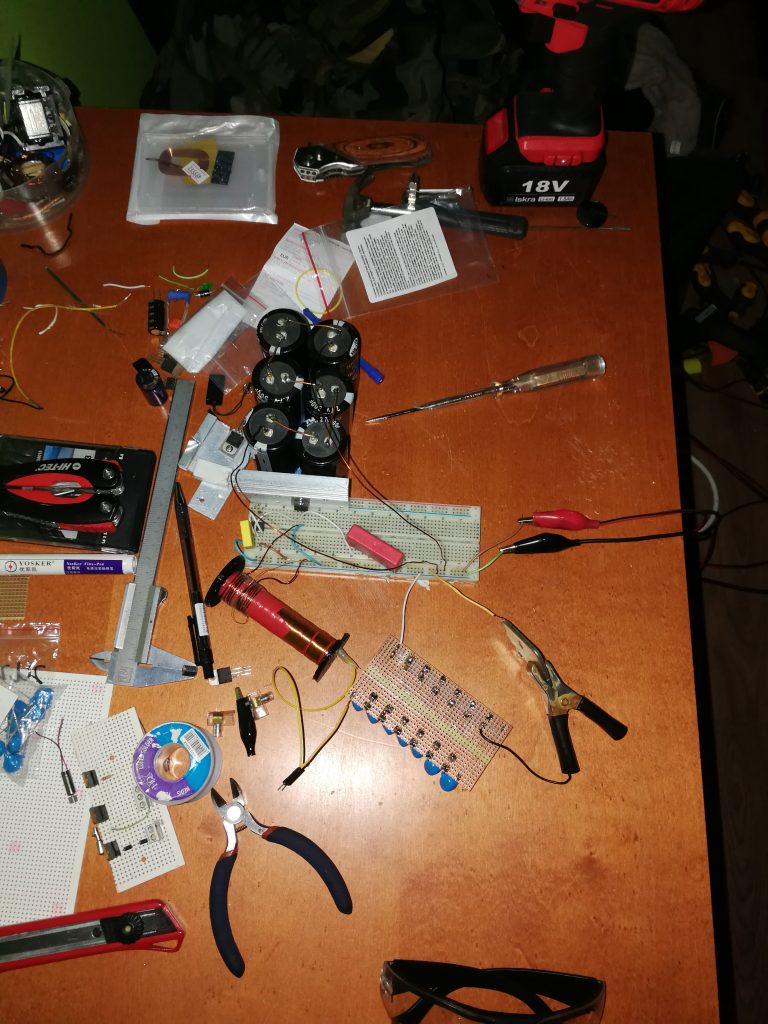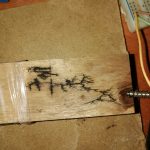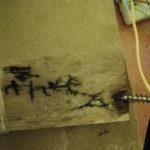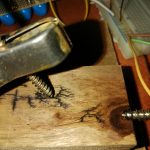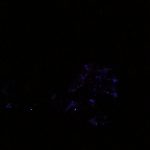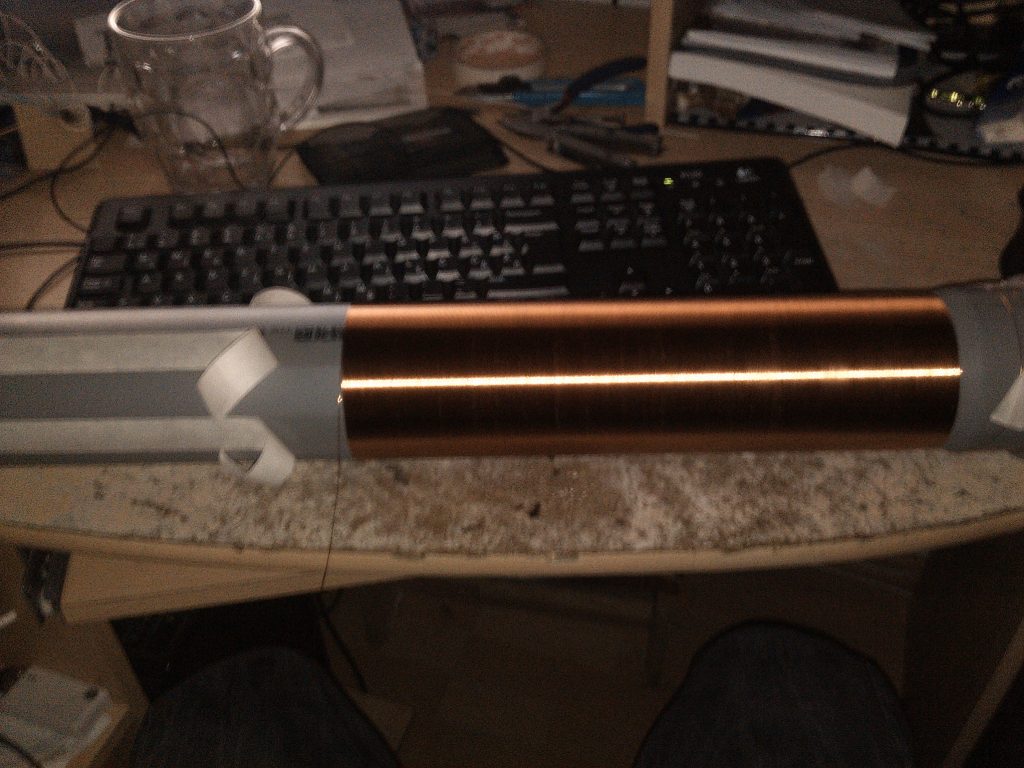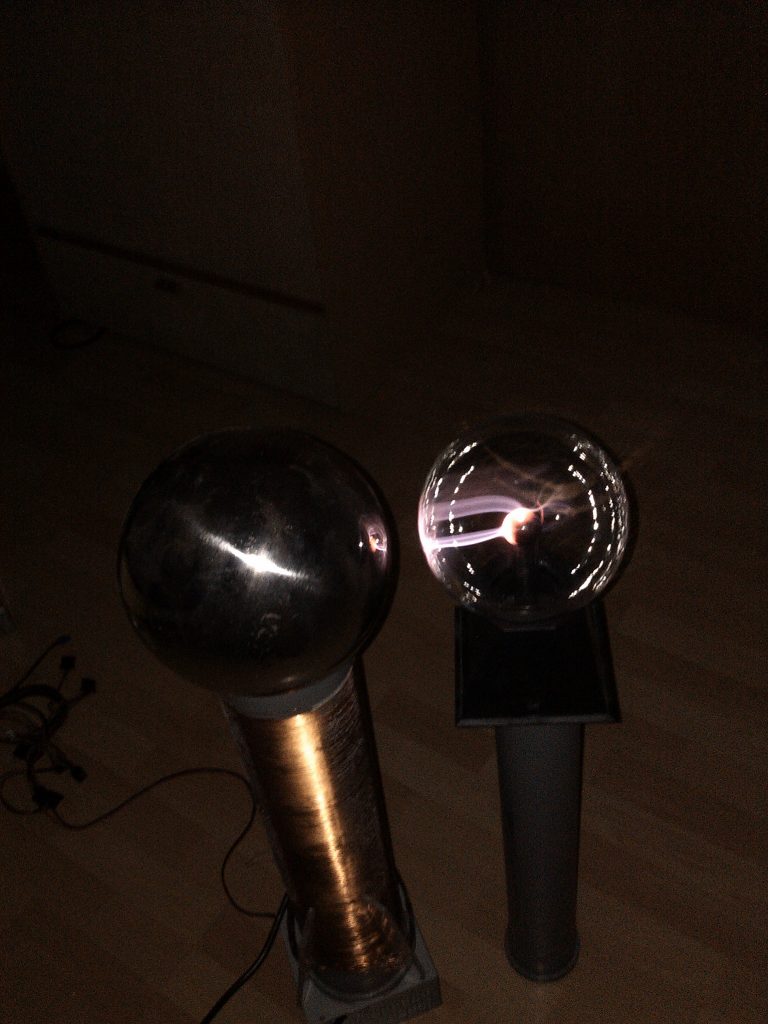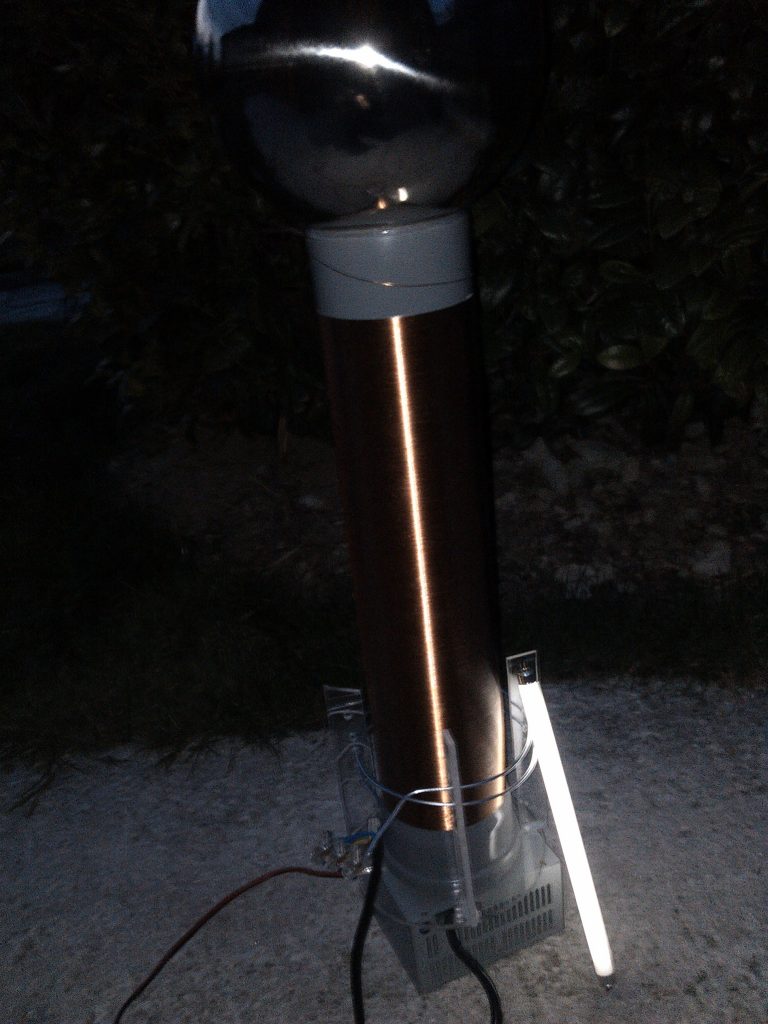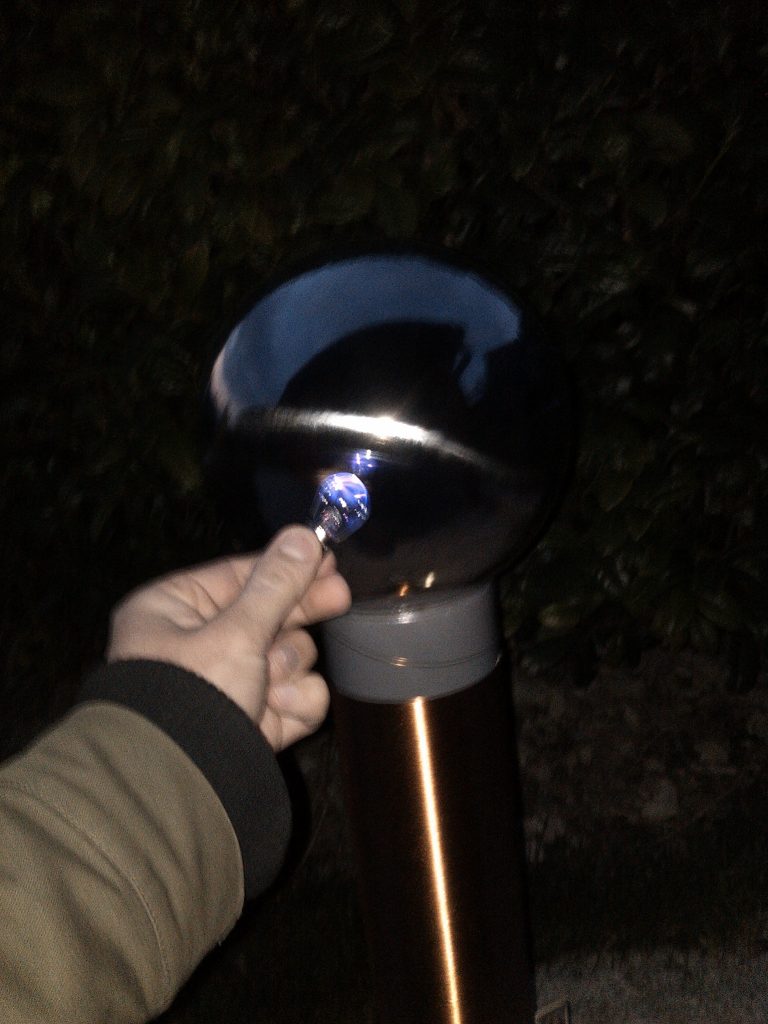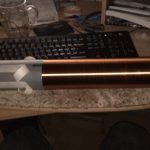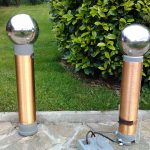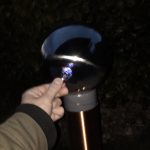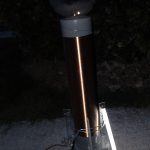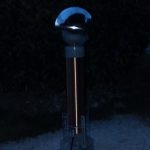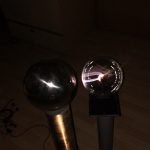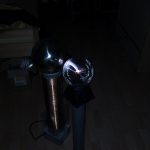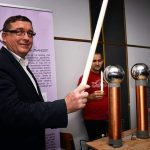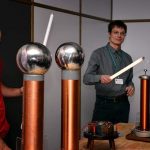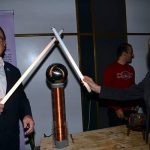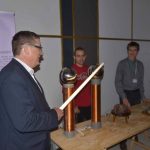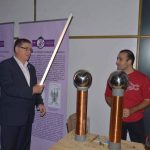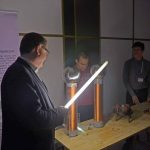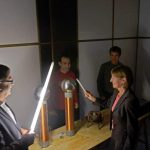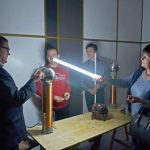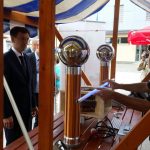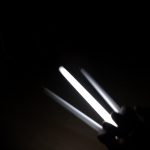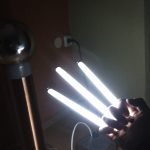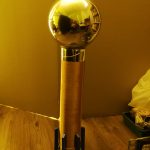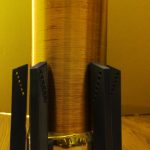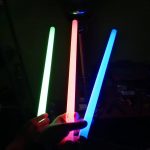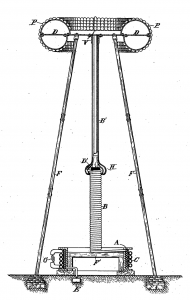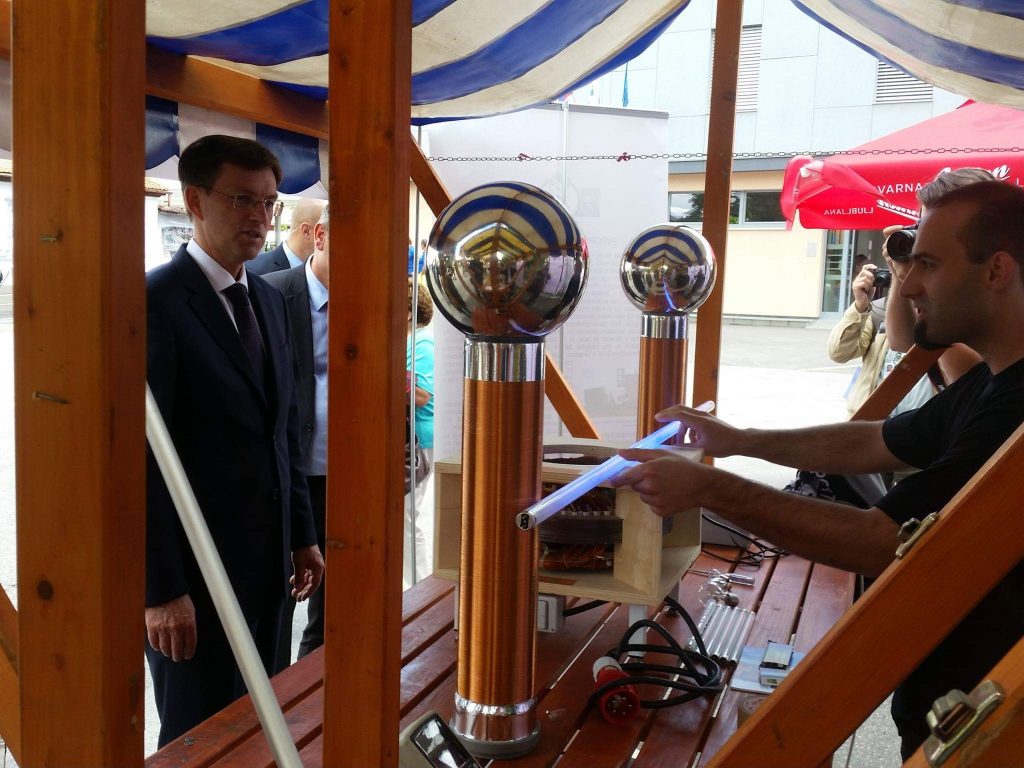Tesla coil and HV experiments
I first time I heard about Tesla was when I read his name off the traffic light “Nikola Tesla”. Not long after that it was changed. Then I learned about him as much as possible.
In my high school I wanted to build my first Tesla coil but the teacher was against it, so I built it when I finished the high school.
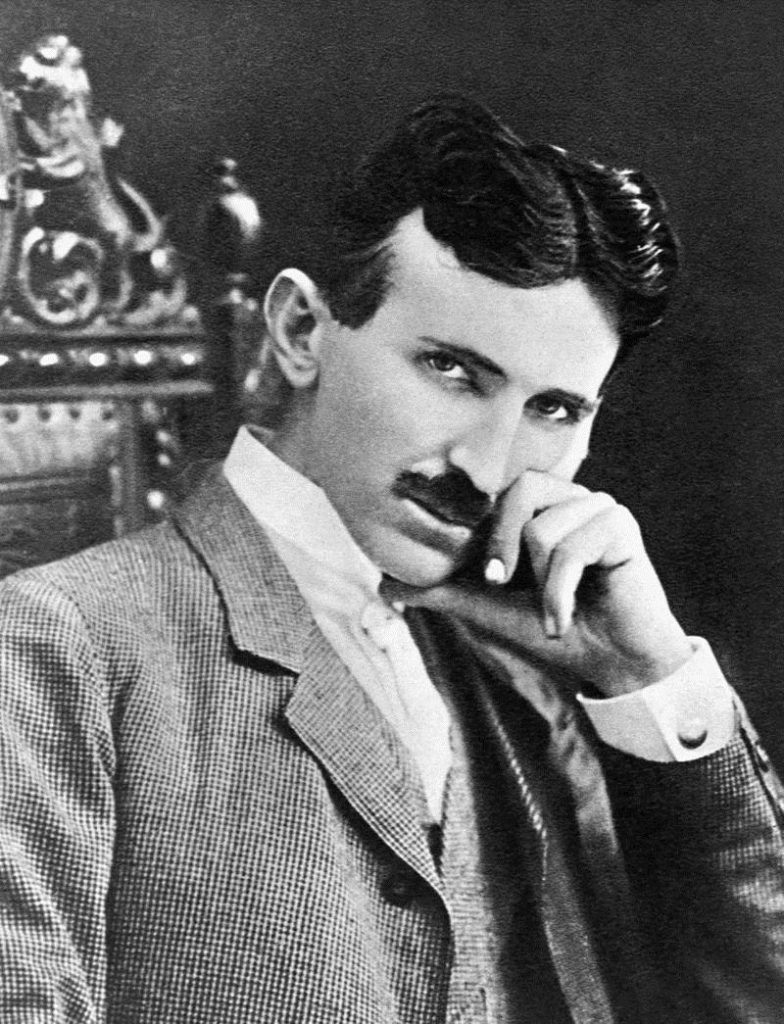
About Nikola Tesla
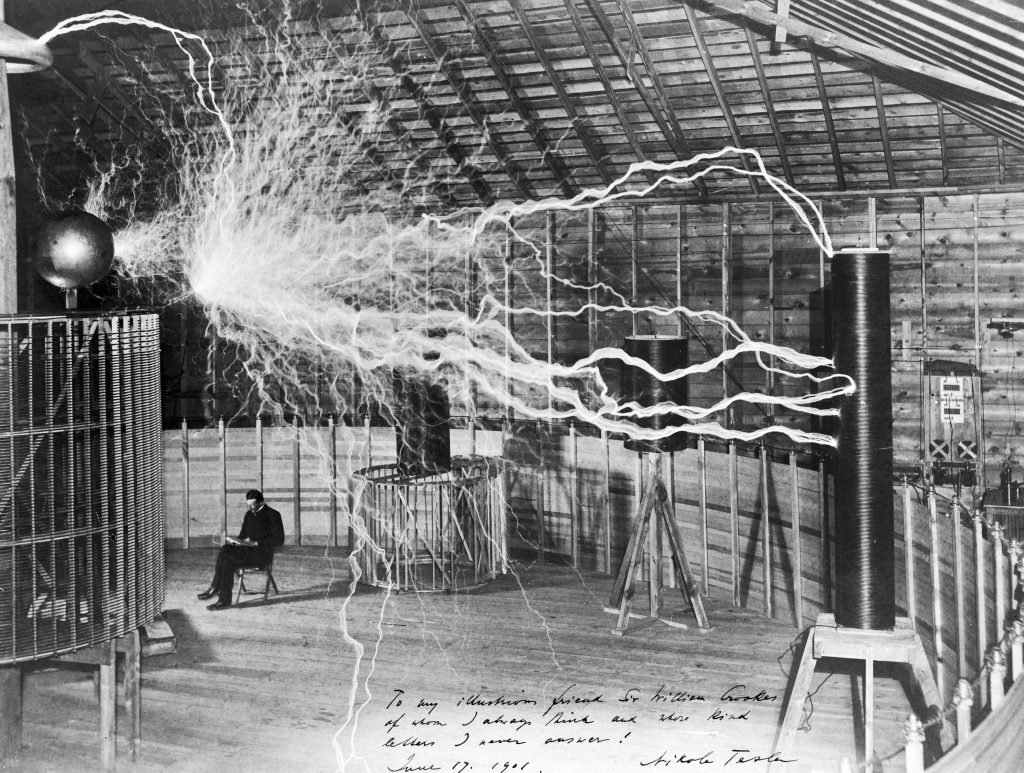
Born and raised in the Austrian Empire, Tesla received an advanced education in engineering and physics in the 1870s and gained practical experience in the early 1880s working in telephony and at Continental Edison in the new electric power industry. He emigrated in 1884 to the United States, where he would become a naturalized citizen. He worked for a short time at the Edison Machine Works in New York City before he struck out on his own. With the help of partners to finance and market his ideas, Tesla
set up laboratories and companies in New York to develop a range of electrical and mechanical devices. His alternating current (AC) induction motor and related polyphase AC patents, licensed by Westinghouse Electric in 1888, earned him a considerable amount of money and became the cornerstone of the polyphase system which that company would eventually market.
Attempting to develop inventions he could patent and market, Tesla conducted a range of experiments with mechanical oscillators/generators, electrical discharge tubes, and early X-ray imaging. He also built a wireless-controlled boat, one of the first ever exhibited. Tesla became well known as an inventor and would demonstrate his achievements to celebrities and wealthy patrons at his lab, and was noted for his showmanship at public lectures. Throughout the 1890s, Tesla pursued his ideas for wireless lighting and worldwide wireless electric power distribution in his high-voltage, high-frequency power experiments in New York and Colorado Springs. In 1893, he made pronouncements on the possibility of wireless communication with his devices. Tesla tried to put these ideas to practical use in his unfinished Wardenclyffe Tower project, an intercontinental wireless communication and power transmitter, but ran out of funding before he could complete it.
After Wardenclyffe, Tesla experimented with a series of inventions in the 1910s and 1920s with varying degrees of success. Having spent most of his money, Tesla lived in a series of New York hotels, leaving behind unpaid bills. He died in New York City in January 1943. Tesla’s work fell into relative obscurity following his death, until 1960, when the General Conference on Weights and Measures named the SI unit of magnetic flux density the tesla in his honor. There has been a resurgence in popular interest in Tesla since the 1990s.
After 1890, Tesla experimented with transmitting power by inductive and capacitive coupling using high AC voltages generated with his Tesla coil. He attempted to develop a wireless lighting system based on near-field inductive and capacitive coupling and conducted a series of public demonstrations where he lit Geissler tubes and even incandescent light bulbs from across a stage. He would spend most of the decade working on variations of this new form of lighting with the help of various investors but none of the ventures succeeded in making a commercial product out of his findings.
In 1893 at St. Louis, Missouri, the Franklin Institute in Philadelphia, Pennsylvania and the National Electric Light Association, Tesla told onlookers that he was sure a system like his could eventually conduct “intelligible signals or perhaps even power to any distance without the use of wires” by conducting it through the Earth.
Tesla served as a vice-president of the American Institute of Electrical Engineers from 1892 to 1894, the forerunner of the modern-day IEEE (along with the Institute of Radio Engineers).
(Source Wikipedia)
